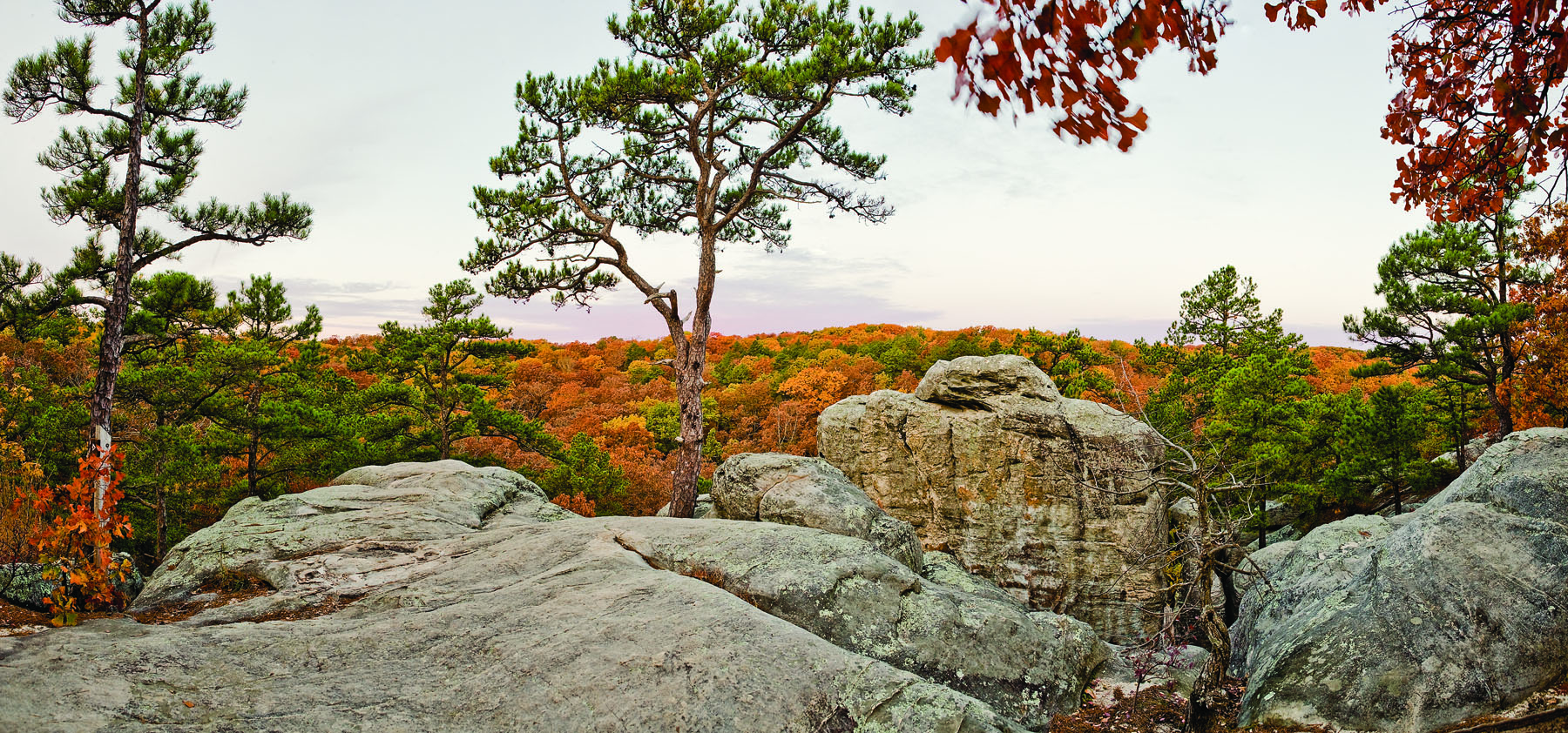Points of Interest:
- Explore a geological wonderland that is a National Natural Landmark.
- View scenic waterfalls and cool box canyons that harbor unusual plants and animals.
- Enjoy the blossoms of rose azalea along the sandstone valley in the spring.
Natural History:
This scenic natural area contains all sorts of fascinating sandstone rock formations including box canyons and wet weather waterfalls. The sandstone rock here is the Lamotte sandstone that was formed from sandy beaches of a shallow ocean that existed here 500 million years ago. Since then layers of limestone were buried upon this sandstone but millions of years of erosion and uplift of the Ozark plateau have exposed the sandstone we see today. Over the eons, ice, rain, wind, plant roots, and streams have worn away this sandstone to form the many unique geologic features here. Some of the interesting geologic features include a double arch that holds up a shelf of sandstone, narrow slot-like canyons, hoodoos (mound or pillar-like sandstone blocks weathered into unusual shapes), a spring flowing out of sandstone (Pickle Springs), and sandstone talus slopes.
Besides the geology, this site supports over 250 vascular plant species including many uncommon species that are considered glacial relicts. These relict species are those that were more common thousands of the years ago when Missouri’s climate was cold and wet because of glaciation. Since then our climate has warmed and some of the species that were more common back then in Missouri still exist in small micro-climates that mimic the cool, moist conditions of the glacial times. Glacial relict species at Pickle Springs include the four-toed salamander, hay-scented fern, large whorled pogonia, and ground cedar, all species of conservation concern, as well as rattlesnake plantain and shining clubmoss.
The cool, moist conditions of the canyon walls support over 40 species of liverworts – one of the most diverse spots for these primitive plants in Missouri. A good number of mosses and lichens also grow on the sandstone rocks. Keep your eyes out for seven species of ferns, including cinnamon fern, and the uncommon partridge berry. On the ridge tops and upper slopes you will see dry woodlands dominated by white and black oak and shortleaf pine with low bush blueberry and farkleberry in the understory. Sandstone soils are very acidic and so plants that tolerate acidic conditions such as blueberries and dittany thrive here.
Walking along Pickle Creek you might spot a pickerel frog, green frog, or southern leopard frog jump into the water. In the waters of Pickle Springs a type of crustacean, an amphipod, has been described that is known only from here. The name Pickle dates back to the original owner of this land, William Pickle, who acquired the land in 1848. Pickle was originally from England and had immigrated to the U.S. in 1842.
From the junction of Highways 32 and W in Farmington, travel east on Highway 32 for 5 miles, then turn right (east) on Highway AA. Follow Highway AA east for 1.7 miles to Dorlac Road (gravel). Turn left (north) onto Dorlac Road and drive 0.4 mile to the parking lot on the right (east) side. Because of the fragility of the sandstone formations and the rare plants that grow here visitors are strongly encouraged to stay on the excellent Trail Through Time hiking trail. This 2 mile hiking trail loop leads visitors to most of the outstanding rock formations with opportunities to view the interesting plants and animals that inhabit the site’s natural communities. Hunting is prohibited.

MO
United States





















